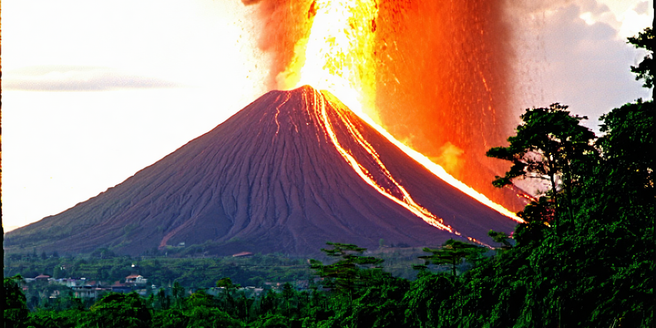
Understanding the Basics of Volcanic Activity
Volcanic activity begins deep beneath the Earth’s surface where heat and pressure cause rocks to melt, forming magma. This molten rock rises as it is less dense than the surrounding solid rocks. When it reaches the surface, it erupts as lava. The type of volcanic eruption, ranging from gentle lava flows to explosive blasts, depends on factors such as magma composition and the amount of dissolved gases. Volcanic activity is closely monitored by scientists to assess the potential hazards. Understanding these fundamentals helps in predicting eruptions and mitigating risks, as well as appreciating the powerful natural processes shaping our planet. Volcanoes play a crucial role in creating new landforms and ecosystems, contributing to the Earth’s atmospheric and geological dynamics.
How Oceanic Temperatures Affect Volcanic Eruptions
Oceanic temperatures influence volcanic activity by affecting the stability of magma chambers. Warmer sea temperatures can contribute to the destabilization of these chambers through thermal expansion and pressure changes. This can lead to increased volcanic activity as magma is more easily pushed towards the surface. Additionally, changes in sea temperature can influence tectonic plate movements, which are closely linked with volcanic eruptions. Anomalies in ocean temperature may act as precursors to volcanic events, offering a window for scientists to predict potential eruptions. Therefore, understanding the relationship between oceanic temperatures and volcanic eruptions is essential for both predicting volcanic activity and preparing for its impacts.
The Role of Submarine Volcanism in Ocean Temperature
Submarine volcanism plays a significant role in influencing ocean temperatures. When underwater volcanoes erupt, they release massive amounts of heat and minerals into the ocean. This heat can cause localized increases in water temperature, which may affect ocean currents and marine life. Furthermore, the minerals released during eruptions can contribute to nutrient-rich plumes, supporting diverse ecosystems. Understanding how submarine volcanoes operate helps scientists assess their impact on oceanic temperatures and subsequently on global climate patterns. Regular monitoring of these underwater volcanic activities is crucial as they remain less observable than their terrestrial counterparts but are equally impactful.
Case Studies: Volcanoes Influencing Ocean Climates
Numerous case studies highlight the influence of volcanic activity on ocean climates. The eruption of Krakatoa in 1883 serves as a historical example, where ash and sulfur dioxide injected into the atmosphere caused significant cooling and oceanic changes. Similarly, recent studies of submarine eruptions in the Pacific have shown localized warming and altered current patterns. By examining these case studies, scientists can identify patterns in volcanic behavior and their climatic consequences. Understanding these interactions provides a framework for predicting future changes in ocean climates, emphasizing the dynamic interplay between the Earth’s geology and climate systems.
Long-term Impacts of Volcanic Eruptions on Oceans
Volcanic eruptions can induce long-term changes in ocean chemistry and temperature, influencing marine ecosystems. The ash and gases ejected can lead to ocean acidification, affecting marine life and coral reef health. Over time, the addition of volcanic material can alter sediment composition, impacting nutrient cycles and the distribution of species. Scientists are actively researching these processes to better understand their implications. Additionally, volcanic-induced climatic shifts can alter sea surface temperatures and ocean currents, potentially resulting in prolonged climate changes. Understanding these long-term impacts is crucial for predicting the future health of marine ecosystems and developing adaptive strategies for conservation.
Future Predictions: Volcanism and Ocean Changes
The future interplay between volcanism and ocean changes is a growing field of study. As climate change progresses, shifts in sea levels and temperatures may influence volcanic activity. Predictions suggest that increased glacial melting could lead to the decompression of Earth’s crust, potentially increasing volcanic eruptions. Continuous advancements in technology enable detailed monitoring and modeling of these interactions, offering insights into future scenarios. Understanding how ongoing climatic changes will impact volcanic activity and ocean conditions is critical for anticipating the challenges and opportunities these natural processes present. Collaborative scientific efforts are necessary to enhance our predictive capabilities regarding these phenomena.
